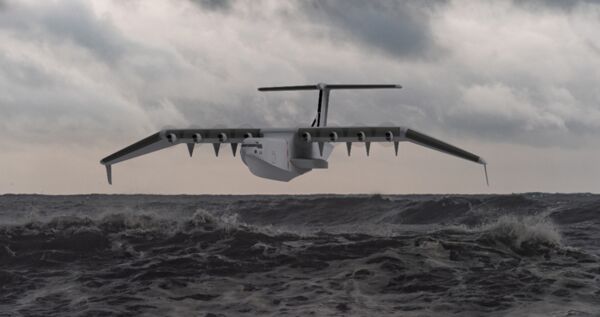
Aurora Flight Sciences' Liberty Lifter concept. (Aurora Flight Sciences)
The US Defense Advanced Research Projects Agency (DARPA) on 1 February selected two companies to design wing-in-ground effect (WIG) concepts for Phase 1 of the Liberty Lifter programme.
The 18-month contract is intended to advance designs from both General Atomics Aeronautical Systems (GA-ASI) and Aurora Flight Sciences through preliminary design review (PDR), plus an additional three months for presentation and manufacturing planning.
The Liberty Lifter is intended to result in designs capable of flying 6,500 n mile with six standard cargo containers or two US Marine Corps (USMC) Amphibious Assault Vehicles, handling waves up to 13 ft high (Sea State 5) and flying up to a 10,000 ft altitude.
“The two teams have taken distinctly different design approaches that will enable us to explore a relatively large design space during Phase 1,” said Christopher Kent, DARPA programme manager.
GA-ASI's concept uses twin fuselages connected by a mid-fuselage wing, which DARPA says should optimise stability in the water; the design requires 12 turboshaft pusher-propellers. Aurora Flight Sciences' design resembles a more traditional flying boat, with a single fuselage and a high wing, and eight forward-facing turboprop engines.
Following completion of Phase 1, DARPA plans to transition into manufacturing and demonstration of a full-scale Liberty Lifter.
Looking to read the full article?
Gain unlimited access to Janes news and more...







